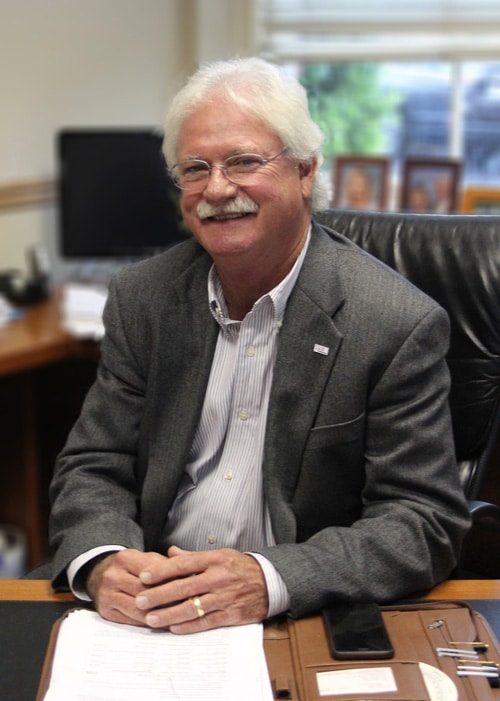Lanis “Lanny” Cope (’74) began dreaming of becoming an architect as an eight-year-old child exploring a construction site near his house in Nashville and turned that dream into a more than 40-year career at the helm of his firm, Cope Architecture.
Recently honored for his legacy with an Accomplished Alumni Award from the university, Cope worked his way through every area of the construction industry while studying at the College of Architecture and Design. He spent time in the offices of architects and engineers and out in the field as a land surveyor, concrete finisher, and heavy equipment operator, among other jobs.
During Cope’s time at UT, the college was not established with a permanent home, as it is today in the nationally recognized Art and Architecture Building. His courses were taught in classrooms scattered about campus including the former Estabrook Hall and the Alumni Memorial Building. Inspired by the college’s collaborative and interdisciplinary nature, Cope served on the college’s Dean’s Advisory Board from 2012 to 2016.
“When you work in architecture there are so many skills needed: design, technical detailing, sketching, drafting, and specifications but also legal aspects, marketing, writing, quality control, and business,” Cope said.
His firm’s impact can be seen across the UT Knoxville campus including the recent Neyland Stadium improvements, the Stokely Family Residence Hall and Dining Facility, the Anderson Training Center, and many more.
In addition to understanding the many facets of architecture and construction, Cope developed an appreciation for travel at an early age. His father worked for American Airlines at a time when employees’ families could fly for free. Cope was afforded the opportunity to travel extensively when he was young, experiencing architecture throughout the United States and later abroad.
That, in part, was the reason he and his wife established the Lanny and Lisa Cope Architecture and Design Travel Award at the College of Architecture and Design. “Architecture is such a broad profession,” Cope said. “Travel allows us to see other places, other styles which opens your eyes and mind to a wide palette of materials and designs that create not just individual buildings but entire cityscapes.”
When Cope graduated from UT, he initially went to work with a prominent and productive firm that allowed multiple opportunities to expand his skills. He worked on seven projects during his first year, and each one was a new technical school. At the time, in Tennessee, there was a push to expand education in the trades. In doing so, he learned the nuances of designing for schools which would later become an area of expertise for Cope Architecture.
One key reason Cope stayed in Knoxville rather than moving back to Nashville or another metropolitan area was that he wanted to participate in the 1982 World’s Fair. As full partner at his firm, he designed five of the pavilions at the fair.
Shortly after the fair ended, change swept through the Knoxville establishment with the collapse of Jake and C.H. Butcher’s banking empire. Cope’s firm was not immune to the fallout, and soon he found himself to be the only one of four partners with projects in the pipeline. On October 14, 1983, he filed papers to start his own company. Ten days later he held his first client meeting.
“It was exciting, invigorating, and scary as hell,” Cope said. “I was leaving a dream job where I was very well paid and had a company car, and I was living the dream I’d had since I was eight years old.
“At first I didn’t have any work, and I’d just bought a new house and had a baby coming in January,” he added. “It was like jumping out in the middle of the ocean, and failure was not an option. I did land that first job and ended up designing about four projects for the client, including one that won a National Design Award. This solidified the relationship for years and years. And, you know, architecture is not just about the buildings, it is a relationship-based and people-oriented profession.”
